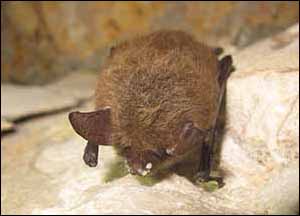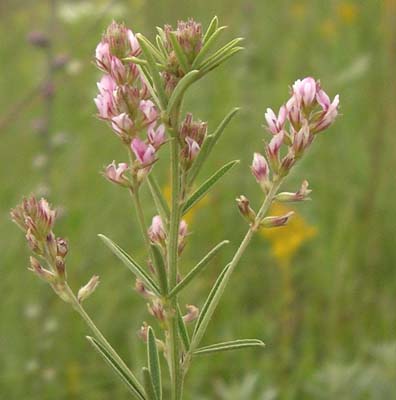
Northern long-eared bat with White Nose Syndrome. Image: University of Illinois/Steve Taylor
By Kayla Smith
Michigan, Wisconsin and Minnesota are getting nearly $43,000 in federal money to protect and research three types of bats.
The money is part of the $37.2 million the U.S. Fish and Wildlife Service is paying 20 states for studies to guide forest management and to buy land for conservation.
Other awards to Great Lakes states:
- Wisconsin will get $122,500 to buy 10 acres of native tallgrass prairie to aid in the recovery of prairie bush clover.
- Michigan will get nearly $43,000 to buy land to protect the Karner Blue butterfly.

The Karner Blue butterfly.
The competitive grants are meant to promote interactions between state and private landowners, conservation groups and other government agencies.
The bat grant will help establish habitat conservation plans, according to the Fisheries and Wildlife Service. After the plan is complete, the states will team up with landowners and conservation groups to initiate joint efforts to protect species in danger of extinction.
The Organization for Bat Conservation will use some of the grant to teach the public about bats, said Rob Mies, the executive director of that Michigan-based organization.
“We will be creating digital resources for other educators to use, providing live bat programs, creating a club for kids to help teach their friends, building a backyard bat habitat program, and launching nation-wide social media messaging,” Mies said.
Mollie Matteson, a senior scientist at the Center for Biological Diversity, leads that group’s efforts to protect northeastern bats from white-nose syndrome — a fungal disease – and other threats.
During her work in Wisconsin, Matteson said she has seen the northern long-eared bat competing for habitat with the lumber industry. Protecting the bat has become a highly contested political debate.
“It’s been very controversial and unfortunate on a number of fronts,” Matteson said.
“Habitat loss is a threat faced by many imperiled species, and addressing that threat is most successful when using a combination of efforts by public and private entities,” said Georgia Parham, a spokesman for the USFWS Midwest Region.
Compromise between state, federal, and commercial stakeholders is exactly what the FWS grant hopes to support, Parham said.
Land purchased in Michigan and Wisconsin as part of the recently announced grants will help protect two species on the brink of extinction.
The Karner Blue butterfly is a picky eater, and can only feed on wild lupine during its caterpillar stage. Wild lupine is dependent on managed land, and its disappearance is linked to the 90 percent reduction of the butterfly in the last 15 years, according to the forest service.
The 15 acres of savanna habitat within Michigan’s land purchase will ensure the long-term protection and management for Karner blue habitats.
The grant money will also buy 10 acres for the Wisconsin Department

Prairie bush clover. Image: USFWS/PhilDelphey
of Natural Resources to buffer the second largest population of prairie bush clovers — a federally listed threatened plant species.
In the United States, native prairie destruction approaches 99 percent.
“USFWS is engaged in many efforts to conserve existing prairie and restore prairie where possible,” says Parham.
Related links: